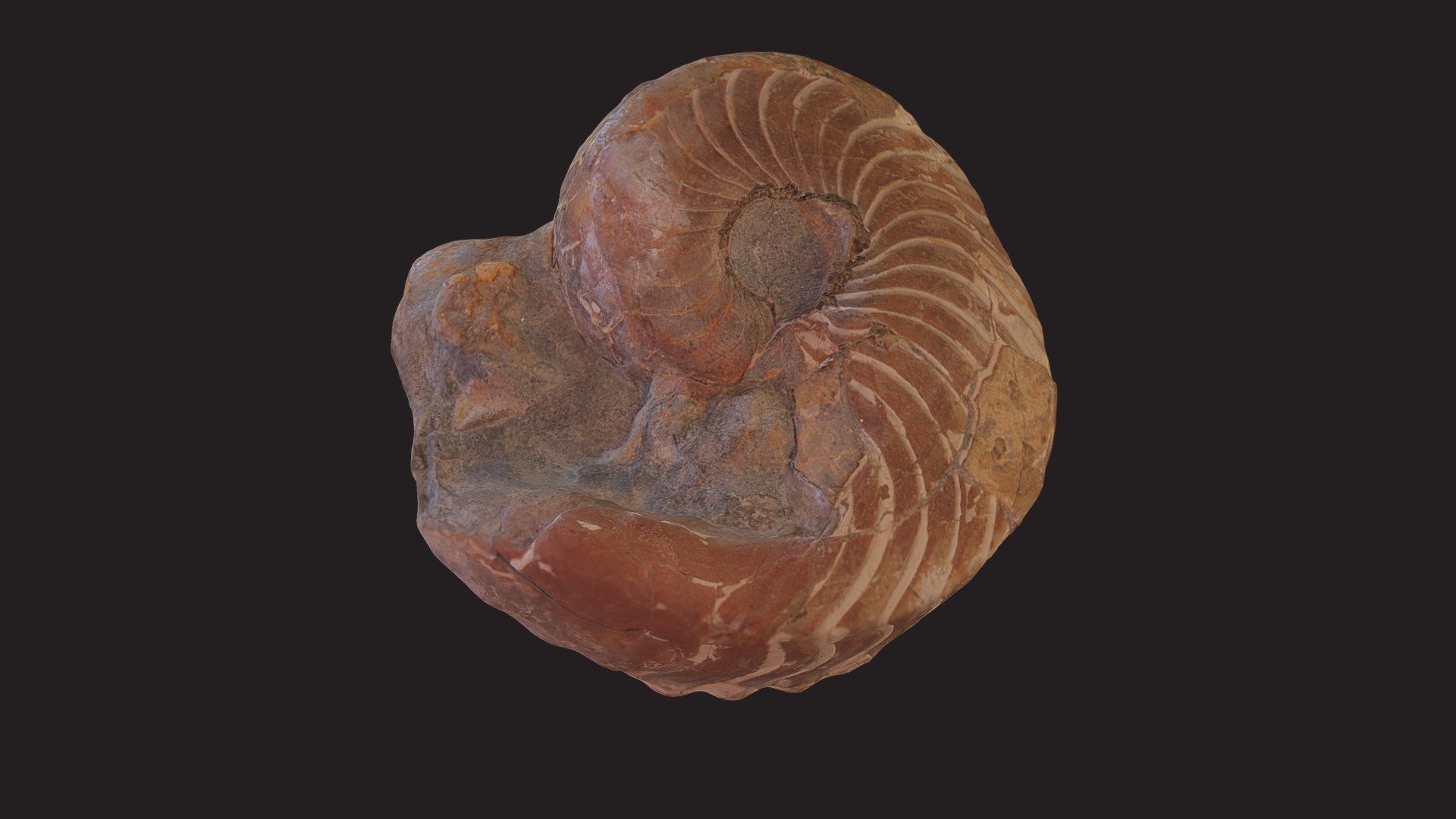
|
|||||
| CMNH 3806, Stenodomatoceras gardi (Murphy, 1970) 3D Model |

|


|
| Model's Description: CMNH 3806, Stenodomatoceras gardi (Murphy, 1970) 3d model contains 180,000 polygons and 90,002 vertices. CMNH 3806, Stenodomatoceras gardi (Murphy, 1970) Late Pennsylvanian (Missourian) Glenshaw formation Columbiana Co., OH Collector: John J. Burke Cephalopods are extant (living) marine mollusks characterized by tentacles attached to a cone-shaped body. The name cephalopod comes directly from the Greek kephalopoda, “head-feet.” Most fossil cephalopods formed an external calcareous (made of calcium carbonate) shell around their body. The shell may be straight (rthoconic), curved (cyrtoconic), or coiled. As cephalopods grow, shells are sealed off into increasingly large chambers, with the body remaining connected by soft tissue in a thin tube called the siphuncle. Many cephalopods live today – cuttlefish, squid, and octopus, but only the Nautilus maintains a coiled shell. (David and Mapes 1996, “Phylum Mollusca, Class Cephalopoda”) Cited in Murphy, J. 1970. J. of Paleo., 44(2), 195-205. Image by Jacob Kordeleski, CMNH Department of Archaeology // Hawken School |
| Model's Textures: (1) RGB Texture #1 |
| Keywords: fossil cephalopod invertebrate mollusc pennsylvanian |
models.ripper@gmail.com |
||||